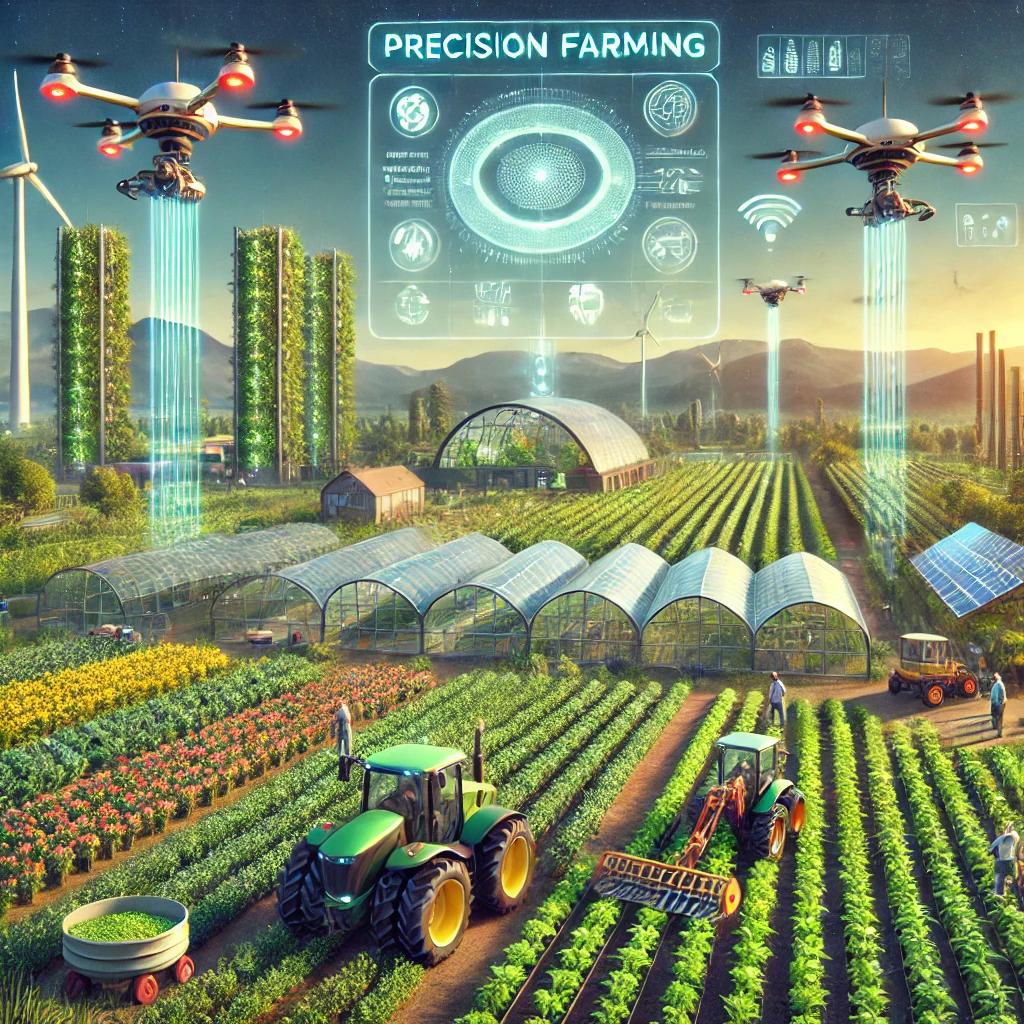User Ideas / Prospects
.jpg) Engineering is often viewed through the lens of technical expertise — blueprints, calculations, and problem-solving mechanics. Yet, for those of us who wear the title of “engineer,” the role extends far beyond mere equations and schematic designs. It’s an identity shaped by curiosity, creativity, responsibility, and the desire to make the world work just a little bit better than before. I am simply the engineer, a builder of systems and solutions, but also a contributor to the social fabric and the unseen forces that keep society moving.The Heart of Problem Solving
Engineering is often viewed through the lens of technical expertise — blueprints, calculations, and problem-solving mechanics. Yet, for those of us who wear the title of “engineer,” the role extends far beyond mere equations and schematic designs. It’s an identity shaped by curiosity, creativity, responsibility, and the desire to make the world work just a little bit better than before. I am simply the engineer, a builder of systems and solutions, but also a contributor to the social fabric and the unseen forces that keep society moving.The Heart of Problem SolvingAt the core of engineering is the art of problem-solving. No matter the discipline — mechanical, civil, electrical, software — engineering is fundamentally about finding efficient and effective ways to address challenges. The problems we solve are not always glamorous. They often involve the everyday machinery and infrastructures that most people take for granted: the roads we travel on, the electrical grids that power our lives, the digital systems that make modern communication possible.
Yet, these problems are never mundane to an engineer. Each presents a new puzzle to unravel, a new opportunity to innovate. The pursuit of elegant solutions is what drives engineers. Whether designing a bridge that can withstand earthquakes or developing an algorithm that sorts through massive data efficiently, engineers are, in essence, creators. I am simply the engineer, but the drive to solve complex, real-world issues makes my work both challenging and fulfilling.
Engineering lives at the intersection of theory and practicality. On the one hand, it demands a deep understanding of scientific principles, mathematical models, and technological frameworks. On the other hand, it requires the application of these abstract concepts to the tangible world, where limitations like cost, safety, and usability come into play.
As engineers, we are constantly translating the laws of physics and the principles of design into tools and technologies that can serve human needs. I am simply the engineer, working with the duality of understanding theory while always having my feet firmly planted in practical reality. My role is to ensure that the lofty ideals of innovation are grounded in solutions that can work, scale, and thrive in the real world.
Engineering is not just about building things; it is about building them responsibly. Engineers are often entrusted with creating systems that will impact thousands, sometimes millions, of people. Bridges, dams, skyscrapers, and even software systems can shape lives in significant ways. Therefore, an engineer’s role comes with profound ethical obligations.
We must consider the long-term consequences of our designs. Will they be sustainable? Will they be safe? Will they serve the greater good, or will they contribute to inequality and harm? Engineering disasters such as collapsed buildings or faulty software that compromises security are stark reminders of the importance of ethics in our profession. I am simply the engineer, but the moral weight of the decisions I make cannot be understated.
Contrary to the popular image of the solitary genius, engineering is rarely a solo pursuit. It is a highly collaborative field, requiring teamwork across multiple disciplines and perspectives. Whether working on a large construction project or developing new technology, engineers must collaborate with architects, planners, scientists, and stakeholders.
Communication becomes just as important as technical skill in this process. An engineer must articulate ideas clearly, understand the needs of clients and users, and work harmoniously with diverse teams. In this sense, I am simply the engineer, but my role is not limited to designing and building. I must also bridge gaps between various collaborators to ensure that projects come to life in the best possible way.
One of the most exciting and daunting aspects of being an engineer is the necessity for continuous learning. Technology evolves rapidly, and so do the tools and techniques at an engineer’s disposal. An engineer’s education does not stop at graduation. Every day brings new advancements, whether in renewable energy, artificial intelligence, or materials science.
I am simply the engineer, but I must always be a student. This need for lifelong learning keeps the profession dynamic and ensures that engineers remain at the cutting edge of innovation. It challenges me to stay curious, adaptable, and willing to embrace new methodologies.
To be an engineer is not just a profession; it is a way of thinking. It is about approaching the world with a mindset of improvement and efficiency. It’s about constantly asking, “How can this be done better?” The systems we create reflect the discipline, ingenuity, and care we bring to our work, but they also reflect a deeper philosophy — the belief that, through diligent effort, we can shape a better future.
I am simply the engineer, part of a lineage of builders, thinkers, and problem-solvers whose work touches every aspect of modern life. But more than that, I am someone who believes in the power of human innovation to solve the most pressing challenges of our time.
Treachery the Other-side of Connecting Wall: A Neighbour's Disastrous Effect on Our Peaceful Refuge
In the CBD of Lawrence street Melbourne stood our loving home of greater than 20 years, a secret award winning house and garden in the middle of the chaos of the city streets. For over 20 years, it was a beautiful sanctuary of comfort, a haven of beauty and asylum.
As an esteemed architect, my friend had graced our community with many urban proposals, but of these none were more personal and loved that the progressive design of the Lawrence Street, Alexandria, Victorian style conversion. Conspicuously in the Sydney Morning Herald, it was hailed as a masterpiece, weaving old-world charm with modern elegance.
The Victorian transmutation was a testament to architectural ingenuity—a two-story build and conversion to a Victorian terrace, offering a house for a small family and a home-office or studio. The highlight was the light tower, soaring above the roof with floating stairs, acquiring the essence of the southeastern and north west skies. French sash windows dressed the master bedroom, while timber casement windows embellish in the bathroom welcomed views and filtered light.
However, this pleasant existence was destroyed when a new neighbour, a fencing contractor, entered the scene next door. Initially welcomed with open arms, his actions soon turned our lives upside down threatening the safety of everyone in the area. Without proper notification, he began demolishing our brick supporting wall, the main load supporting wall of our master bedroom. At one stage he had constructed pipes from his roof diverting water into our studio, causing several thousand dollars damage to our property and undermining its structural integrity.
To compound matters, we through investigation found that the intermediate wall did not meet the legal fire rating, a critical omission that endangered our well-being. Despite our urgent endeavours to seek resolution the problem with the builder and contacting the council, we were informed the builder's inspector had already approved on the building renovations, providing no recourse and leaving us vulnerable to harm.
In spite of receiving a legal judgement in their favour and compensation for the damages incurred, the emotional toll was abysmal and created many unpleasant memories. They were forced to sell their beloved home, we mourned the loss of our award winning sanctuary, another victim of proper government oversight and dangerous building practices. The lack of oversight and appropriate governance by government and local council allowed this tragedy to unfold, heightening the necessity for more extensive responsibilities and protection for owners.
As we grapple with the aftermath of this trial, we are left to consider: What help do owners have when their sanctuaries are threatened by the neglect of dodgy construction companies?
How to Begin - Pick the Capable and Unqualified Building Companies in Australia..?
The Failed, Fugitive, and the end of Building CompanyToplace
from July 2023
A Insolvent adviser was comprehensively involved with acquiring his insolvent registered company a very profitable construction contract — managing the dissolution of Insolvent Jean Nassif's business empire, which drowned under liabilities exceeding $1.24 billion, incl. $88.5 million due to suppliers and onsite builders.
Fresh revelations about the ruin of Nassif's Toplace corporation have surfaced in documents shown to the Australian Federal Court this month by administrators from dVT Group. These evidence unveiled that secured creditors, such as banks with mortgages on Toplace properties and offshore lenders in tax havens like the British Virgin Islands, are owed one thousand million.
Additional Relevant Information:
Jean Nassif, and Toplace's Skyview development in Castle Hill.
Unsecured creditors, have filed claims with a total est. $244 million.
Court filed claims also tell that Riad Tayeh, company founder of dVT Group, which was involved in a key responsibility in guaranteeing his firm's assignment as bankruptcy managers. In spite of being declared bankrupt in July 2022 with millions in debt in debt, Tayeh, now a consultant, and business colleague Antony Resnick went to crucial business meetings with Toplace executives in the days leading up to the companies appointment as bankruptcy managers.
As well as those attending the meetings on June 2019 was Jean Nassif's 29-year-old daughter, Ashlyn, whose legal practicing certificate has been suspended while she fights charges relating to fraud tied to Toplace's Skyview construction development in Castle Hill.
Riad Tayeh was declared insolvent in May 2022.
Just before the meetings, an arrest warrant was issued of Jean Nassif, 55, who escaped to Dubai in October 2022. Jean and Ashlyn Nassif are accused of falsifying contracts to secure a $150 million loan from Westpac.
In July, Resnick and fellow dVT partner Suelen McCallum were made voluntary bankruptcy administrators for Toplace, following a resolution passed by Jean Nassif, Toplace's sole director, via email just hours prior. The administrators now face the task of handling one of Australia's biggest corporate bankruptcy's.
Resnick filed an affidavit in the Federal Court indicating that while Toplace's assets are valued at approximately $1.47 billion, its debts are nearly the same amount. Despite this, several owners' corporations have filed claims amounting to nearly $124 million to address serious defects in Toplace's buildings.
Further complicating the administrators' task is the web of intercompany loans among Nassif's entities, which amount to $319 million. adding that Toplace's financial books had not been properly updated since 2021.
Sydney Buildings Falling Down... Nightmare on Builders Street?!
Continuing from my opinion piece "Holding the Line" (https://shorturl.at/4xbiF), the following stories outline a persistent sickness within the Sydney housing and property market. Despite recently updated NSW Building Property legislation, many investors are forced to buy homes that do not guarantee the safety of their money and investment.
These stories often go unnoticed and become the burden of socially righteous politicians in search of votes. The diminishing hope that government and local councils will provide a safe pair of hands for Australians striving to live the Aussie homeowner dream is disheartening.
Failures of Governance
- New Tower Block Evacuated Amid Cracks Concern: (https://t.ly/8b5Xd)
- Opal Tower Evacuation Amid Structural Concerns: (https://t.ly/vy_eG)
Betrayal Behind the Walls: A Neighbor's Ordeal
In the heart of Alexandria stood my friends David and Anne's sanctuary—a walled garden amidst the chaos of city streets. For 30 years, it was a place of solace and safety. David, an esteemed architect, had graced our community with numerous urban projects, none as beloved as the Lawrence Street Victorian conversion. Hailed as a masterpiece, it blended old-world charm with modern elegance.
The Victorian conversion featured a two-storey addition and renovations to a late Victorian terrace, highlighted by a light tower soaring above the main structure with suspended stairs. French windows adorned the bedroom, while timber casement windows in the bathroom welcomed views and filtered light.
As the design set a precedent, builders and designers began poaching the concept. Paul Meek, a builder, purchased the single-storey terrace adjoining my friends' and sought to incorporate David's design concept into his new renovation.
Life was reasonable until Meek began demolishing the upper walls and roof of his terrace, causing horrendous noise and damage to David and Anne's wall. When confronted, Meek revealed large cracks on their wall but refused entry for inspection.
Eventually, David hired an unbiased engineer to inspect the wall at his and Anne's expense, as the City of Sydney had failed to include a Dilapidation Report in Meek's Development Consent.
The wall damage was just the beginning. David and Anne experienced flat car tires from builders' screws, water damage in their home, and other disruptive issues. Despite legal advice, they struggled to hold Meek accountable. Offers from Meek to repair the damage were refused, and my friends settled for a small sum for walls and ceiling damage.
Meek's negligence continued with a faulty stormwater system, causing further damage and concerns about termite risks. Complaints to the Council and Building Certifier were dismissed, leading to a futile letter of demand from David's solicitor.
After repeated flooding incidents and confrontations, David and Anne sought conciliation through the NSW Community Justice Centre, but the Meeks refused. Left with no choice, David and Anne sold their house and retired to the NSW far south coast. The legitimacy of private certifiers approving building works remains under scrutiny by State and Local Government and Royal Commission investigations.
Conclusion
"We did everything we could to resolve these issues; however, although we received minor compensation, it was nothing compared to the stress we endured trying to get our neighbor to build responsibly, and a state government and local council who could do nothing to protect us due to a lack of proper governance."
Australian homeowners are left to ponder: What other disasters are waiting to destroy their dreams? What recourse do house, apartment, and property owners have when their sanctuaries are threatened by greed, incompetence, and negligence? Even with recent legislation in NSW, it fails to provide complete protection for homeowners.
When to Begin - Vote the Capable and Incompetent Building Companie in Australia..?
The Insolvent, Suspect, and the Collapse of CompanyToplace's Billion-Dollar Empire
from Sept 2023
A Defendant building adviser played a crucial role in his bankrupt corporation a highly lucrative job — managing the disintegration of Suspect Jean Nassif's property empire, which went under debts surpassing $1.24 billion, inclusive $88.5 million payable to suppliers and tradespeople.
Brand New disclosures about the ruin of Nassif's Toplace group of compaines have surfaced in documented evidence given to the Federal Court this recently by administrators from dVT Group of Companies. These documents unveiled that secured creditors, such as banks with mortgages on Toplace properties and offshore lenders in tax havens like the British Virgin Islands, are owed one thousand million.
Additional Applicatory Info:
Riad Tayeh, Jean Nassif, and Toplace's Skyview building development in Castle Hill.
Creditors without Security, have issued financial claims totalling an est. quarter of a billion.
Australian Federal Court claims also indicate that Riad Tayeh, business founder of dVT Group of companies, played a key responsibility in securing his firm's designation as bankruptcy managers. Despite being declared financially bankrupt in July last year with several million in debt, Tayeh, now a business advisor, and business colleague Antony Resnick attended important business meetings with Toplace top managers in the period before the companies appointment as administrators.
Among those at the meetings on Aug 2019 was Jean Nassif's 29-year-old daughter, Ashlyn, whose legal certificate has been suspended while she fights charges related to a $150 million fraud bound to Toplace's Skyview building development in Castle Hill.
Riad Tayeh was legally financially bankrupt in May 2022.
Just days before the meetings, a warrant was issued for the arrest of Jean Nassif, 55, who escaped to Dubai in November 2022. Jean and Ashlyn Nassif are accused of fraud to secure a $150 million loan from Westpac.
In June, Resnick and fellow dVT partner Suelen McCallum were nominated voluntary administrators for Toplace, following a resolution passed by Jean Nassif, Toplace's sole director, via email just hours prior. The bankruptcy administrators now face the task of handling one of Australia's largest corporate bankruptcy's.
Resnick filed an affidavit in the Federal Court indicating that while Toplace's assets are valued at approximately $1.47 billion, its debts are nearly the same amount. Administrators are also investigating more than 3,000 residential apartments still under development.
Further complicating the administrators' task The administrators noted difficulty in unraveling the debt due to "intermingling of financial records," adding that Toplace's financial books had not been properly updated since 2021.
In the CBD of Alexandria Melbourne, Australia we had renovated our beautiful home of 30 years, a secret award winning house and garden in the middle of the chaos of its streets. For over 20 years, it was a beautiful refuge of comfort, a haven of beauty and safety.
As an honoured architect designer, my friend had donated to our community with numerous municipal proposals, but of these none were more personal that the progressive design of the Lawrence Street, Alexandria, Sydney, Victorian style conversion. Featured in the Sydney Morning Herald, it was hailed as a creative masterpiece, weaving Victorian appeal with modern elegance.
The Victorian conversion was a testament to architectural ingenuity—a three-story build and conversion to a late Victorian semi-attached, providing a house for a small family and a studio. The highlight was the light tower, soaring above the main structure with suspended stairs, acquiring the essence of the southeastern and northwestern sky. French sash windows dressed the main bedroom, while timber casement windows embellish in the bathroom welcomed views and filtered light.
However, this pleasant existence was destroyed when our neighbour, a builder, entered the scene next door. Initially welcomed with open arms, his illegal actions soon created absolute chaos threatening the safety of everyone in the area. Without due diligence, he began demolishing our brick supporting wall, the major load-bearing wall of our master bedroom. At one period of time he had setup pipes from his roof diverting water into our office, causing several thousand dollars damage to our property and undermining its structural integrity.
To compound matters, we through investigation found that the intermediate wall did not meet the legal fire rating, a major oversight that endangered everyone's safety. In spite of our urgent efforts to seek resolution the problem with the builder and contacting the council, the council said the builder's inspector had already signed off on the building renovations, providing no recourse and leaving us vulnerable to fire.
Despite getting a legal decision in their favour and compensation for the damages incurred, the emotional toll was abysmal and created many unpleasant memories. They were forced to sell their cherished home, we mourned the loss of our award winning sanctuary, another casualty of government negligence and dangerous construction practices. The lack of proper oversight and appropriate governance by government and local council created the environment for this tragedy to unfold, highlighting the necessity for more responsibilities and protection for homeowners.
As we wrestle with the effects of this ordeal, we are left to consider: What help do homeowners have when their sanctuaries are made vulnerable by the carelessness of others? {https://www.facebook.com/groups/1240633520160302, Construction
Africa, a continent usually celebrated to its vibrant cultures and stunning surroundings, which can be treasure trove of fascinating info and unbelievable achievements. For journey fans, educators, and cultural aficionados, diving into Africa's depths presents a novel technique to enrich their data and broaden their perspectives.
A Tapestry of Cultures: Africa's Linguistic and Cultural Diversity
With over 2,000 languages spoken throughout its vast territories, Africa here's a beacon of linguistic diversity. From the extensively spoken Swahili in East Africa to the ancient Amharic in Ethiopia, each language carries its own historical past cultural significance. Understanding these languages it offers a window directly into the continent's rich cultural fabric.
Past languages, Africa boasts a number of ethnic teams and traditions that add to its dynamic cultural landscape. The Maasai of Kenya, the Berbers of North Africa, considering the Zulu of South Africa are just some a bit of the continent's diverse communities, each from their respective customs and histories.
Breathtaking Landscapes: Africa's Pure Marvels
Caused from majestic Sahara Desert to the lush Congo Rainforest, Africa's landscapes are as assorted since they are breathtaking. The enduring Mount Kilimanjaro attracts adventurers and climbers from around the world, despite the fact that the Serengeti affords unparalleled wildlife experiences, internet hosting the storied wildebeest migration.
Some searching for the tranquility of water, the Nile River, the longest river on the earth, add the picturesque Victoria Falls, one in all the biggest and above awe-inspiring waterfalls, provide unforgettable experiences. These natural wonders absolutely are a testament to Africa's gorgeous geographical diversity.
The Cradle of Humanity: Africa's Historical Significance
Africa holds a nice part in human history as the cradle of humanity. The continent has got some of the oldest identified fossils of early people, that includes famous Lucy, discovered Ethiopia. These findings have reshaped our understanding of human evolution and emphasize Africa's pivotal function in our shared history.
Revolutionary Achievements: Africa's Trendy Contributions
While Africa's historic contributions are profound, its trendy innovations are equally impressive. Countries like Kenya became leaders in cellular banking expertise with improvements like M-Pesa, revolutionizing financial companies personal continent. Equally, Rwanda has evolved which will serve as a hub for drone expertise, utilizing drones to perform medical provides to remote areas, showcasing Africa's ahead-considering spirit.
These advancements spotlight the continent's potential in shaping the worldwide future by expertise and innovation.
Why Discover Africa?
Exploring Africa's cultural range, pure wonders, and historical significance gives readers an opportunity acquire new perspectives plus deeper appreciation in favor of continent. Understanding Africa's contributions to world surroundings trendy developments can inspire vacationers, educators, and cultural fanatics to engage more deeply this particular unbelievable a section of the world.
By immersing themselves in Africa's tales, readers can uncover a wealth of information and inspiration, enriching their lives while using continent's unique heritage and modern marvels.
Able to dive deeper into Africa's wonders? Discover additional assets and plan your exciting journey to experience first-hand the continent's unbelievable offerings. Regional Conflicts and Resolutions
- Roles: Design and develop farming machinery, equipment, and tools; implement irrigation and drainage systems.
- Key Skills and Tools:
- Mechanical Design: Use of CAD software like AutoCAD, SolidWorks, and CATIA for designing machinery.
- Fluid Mechanics & Hydraulics: Understanding hydraulic systems and pumps for irrigation and drainage.
- Structural Engineering: Designing farm structures using tools like Revit for drafting and structural analysis.
- Environmental Impact Assessment: Familiarity with environmental analysis tools like COMSOL Multiphysics.
- Roles: Design efficient irrigation systems, analyze soil and weather data, and manage water resources.
- Key Skills and Tools:
- GIS and Mapping Software: Use ArcGIS, QGIS, or AutoCAD Civil 3D for designing water distribution systems.
- Hydrology: Knowledge of hydrologic models and tools like HEC-RAS for flood and water flow simulation.
- Soil Moisture Sensors: Familiarity with installing and interpreting data from soil sensors (e.g., TDR and Capacitance Probes).
- Water Management: Knowledge of Evapotranspiration (ET) rates and irrigation scheduling software like CropManage.
- Roles: Implement precision farming technologies using GPS, sensors, and drones.
- Key Skills and Tools:
- GIS and Remote Sensing: Use ArcGIS, ENVI, and Erdas Imagine to analyze satellite imagery and map fields.
- Drones (UAVs): Operate drones for aerial surveys and analysis using software like DroneDeploy and Pix4D.
- Data Analytics: Analyzing farm data using Python, R, and MATLAB to optimize input use (e.g., fertilizers, water).
- GPS Technology: Understanding of GPS-enabled equipment for precision mapping of fields (e.g., Trimble and John Deere precision farming systems).
- Roles: Design, test, and maintain agricultural machinery such as tractors, harvesters, and irrigation systems.
- Key Skills and Tools:
- Mechanical Engineering: Use of SolidWorks, ANSYS, or AutoCAD to design and simulate machinery.
- Automation and Robotics: Knowledge of programmable logic controllers (PLCs) and industrial robotics (e.g., Siemens, Allen-Bradley).
- Machinery Maintenance: Diagnostics tools like CAT Electronic Technician (ET) and JDLink for real-time monitoring of machinery health.
- Energy Efficiency: Optimization using tools like MATLAB for improving fuel efficiency in equipment.
- Roles: Minimize environmental impact of farming practices, manage agricultural waste, and improve soil health.
- Key Skills and Tools:
- Sustainability Assessment Tools: Use of SimaPro or GaBi for lifecycle analysis and evaluating the environmental impact of farm practices.
- Waste Management Systems: Knowledge of designing manure and composting systems using AutoCAD and HydroCAD.
- Soil Conservation Technologies: Implementing tools like WEPP (Water Erosion Prediction Project) for soil erosion control.
- Renewable Energy: Working with solar and bioenergy systems, using PVSyst for solar energy simulation.
- Roles: Design food processing systems for packaging, storing, and preserving agricultural products.
- Key Skills and Tools:
- Process Automation: Use of PLCs and SCADA systems (e.g., Wonderware, LabVIEW) to automate food processing systems.
- Thermodynamics & Refrigeration: Design refrigeration and thermal processing systems using tools like AutoCAD MEP or SolidWorks Flow Simulation.
- Packaging Technology: Familiarity with Esko for packaging design and ArtiosCAD for structural packaging solutions.
- Quality Control: Use of Six Sigma methodologies and software like Minitab for process optimization.
- Roles: Design and implement strategies to manage water resources and prevent soil erosion.
- Key Skills and Tools:
- Soil Science: Use of soil analysis software like Hydrus to model water movement and retention in soil.
- Watershed Management: Familiarity with tools like SWAT (Soil and Water Assessment Tool) for modeling watersheds and analyzing land use impact on water flow.
- Erosion Control Technologies: Use of Civil 3D and HEC-HMS for designing drainage and erosion control structures.
- Land Restoration: Knowledge of reforestation, crop rotation planning, and the use of sustainable land management software.
- Roles: Implement cutting-edge technologies such as robotics, IoT, and AI to optimize farm operations.
- Key Skills and Tools:
- Robotics and Automation: Use of ROS (Robot Operating System) and programming in Python or C++ for automating agricultural tasks.
- Internet of Things (IoT): Implement IoT solutions using platforms like AWS IoT or Azure IoT Hub to monitor and manage farm equipment remotely.
- AI and Machine Learning: Build AI models using frameworks like TensorFlow or PyTorch for predictive analytics in crop management.
- Drone and Sensor Integration: Develop real-time monitoring systems with platforms like ThingSpeak or IBM Watson IoT.
- Roles: Develop systems to manage, store, and transport crops post-harvest.
- Key Skills and Tools:
- Refrigeration Systems: Design cold storage systems using Revit MEP or AutoCAD MEP to manage temperature and humidity.
- Supply Chain Management: Use of SAP or Oracle Supply Chain Management for optimizing logistics and distribution of perishable goods.
- Packaging Engineering: Develop sustainable packaging using tools like ArtiosCAD for 3D modeling and Esko Studio for visual packaging design.
- Quality Assurance: Implement quality control systems using HACCP (Hazard Analysis Critical Control Point) and tools like LabWare LIMS.
- Roles: Conduct research on new agricultural technologies and improve existing ones through trials and experimentation.
- Key Skills and Tools:
- Statistical Analysis: Use of SPSS, R, or SAS for analyzing experimental data and interpreting results.
- Lab Equipment and Experimentation: Operate farm research equipment, data loggers, and field sensors (e.g., LI-COR for environmental measurements).
- Experimental Design Tools: Use of software like Design-Expert or Minitab for designing and analyzing agricultural experiments.
- Collaboration Platforms: Share research findings using collaborative platforms such as Mendeley or EndNote for citation management.
This list highlights the specific tools and knowledge required for each role in agricultural engineering, ensuring that engineers are equipped with the right expertise to advance farming technology and sustainability.
The future of agricultural engineering is poised for significant transformation as it integrates more advanced technologies and adapts to global challenges such as climate change, resource scarcity, and population growth. Some key trends and technologies shaping the future of agricultural engineering include:
1. Precision Agriculture- Key Technologies: GPS, drones, and satellite imagery will continue to be integrated with farming equipment to precisely monitor crop conditions, soil moisture levels, and other critical factors. This approach allows for optimized input usage (water, fertilizers, pesticides) and higher crop yields.
- Impact: Precision agriculture can improve efficiency and sustainability by reducing waste and increasing productivity. With AI-powered analytics, farmers can make real-time decisions based on data.
- Future Prospects: The increasing affordability and accessibility of sensors and AI tools will make precision agriculture more widespread across both large-scale and smallholder farms
.
- Key Technologies: Autonomous tractors, harvesters, and weeding robots are becoming more common. These machines reduce labor costs and increase productivity, particularly in regions facing labor shortages.
- Impact: Automated equipment can work around the clock, which is especially important for time-sensitive farming operations such as planting and harvesting. Robots can also perform tasks such as weeding or fruit picking, which traditionally require manual labor.
- Future Prospects: As robots become more sophisticated, they will handle even more complex agricultural tasks, such as precision planting and selective harvesting.
- Key Technologies: Vertical farming uses LED lighting, hydroponic or aeroponic systems, and climate-controlled environments to grow crops in urban areas. CEA includes greenhouses and indoor farms that can produce food year-round, regardless of outdoor conditions.
- Impact: Vertical farms reduce land usage and transportation costs, while CEA systems can produce higher yields with fewer inputs. This is critical for feeding growing urban populations sustainably.
- Future Prospects: As urbanization increases, vertical farming could become a key solution to local food production. Innovations in LED technology, energy efficiency, and water recycling will make this approach more economically viable .
- Key Technologies: Sustainable agriculture involves using renewable energy (solar, wind), reducing water and fertilizer use, and implementing crop rotation and conservation tillage.
- Impact: These practices can help reduce greenhouse gas emissions, improve soil health, and protect biodiversity.
- Future Prospects: Governments and global organizations are likely to promote policies supporting sustainable practices, with a strong focus on carbon-neutral farming .
- Key Technologies: Genetic modification (GM), CRISPR gene editing, and other biotechnologies will allow for the creation of crops that are more resistant to drought, pests, and diseases. This will be critical in adapting to the effects of climate change.
- Impact: These innovations could lead to higher crop yields, improved nutritional quality, and crops that require fewer inputs such as water and pesticides.
- Future Prospects: Biotechnology will continue to evolve, potentially allowing for even more precise manipulation of crop genomes to suit specific environmental conditions .
- Impact: Technologies like drought-resistant seeds and precision irrigation systems will allow farmers to continue growing crops in increasingly hostile environments.
- Future Prospects: Climate change is a major driver of innovation in agricultural engineering, and research will likely focus on ensuring that farming systems can withstand environmental stresses .
In conclusion, agricultural engineering has very bright future that heavily incorporates automation, data-driven farming, sustainability, and biotechnology. These advancements will allow farmers to produce more food with fewer resources, reduce environmental impact, and adapt to the growing challenges of climate change.
Notable Asian agricultural engineers, scientists, and innovators who have made remarkable contributions to agricultural development in Asia. Their work has improved food security, introduced new technologies, and empowered smallholder farmers, contributing to the transformation of agriculture across the continent.
Key Asian Agricultural Engineers, Scientists, and Innovators

- Contribution: Known as the "Father of Hybrid Rice," Yuan Longping developed the first high-yielding hybrid rice varieties, which significantly increased rice production and helped alleviate hunger in China and other Asian countries.
- Impact: His innovations in hybrid rice have been adopted worldwide, helping feed billions of people.
- Famous Quote: "To make a greater contribution to mankind, we should not only meet the needs of China but also help feed the world."

- Contribution: Known as the "Father of the Green Revolution" in India, Swaminathan introduced high-yielding varieties of wheat and rice that helped India achieve self-sufficiency in food production during the 1960s and 70s.
- Impact: His work prevented famines in India and significantly improved the country’s food security.
- Famous Quote: "If agriculture goes wrong, nothing else will have a chance to go right."
3. William Dar (1953–Present) – Philippines
- Contribution: Dar is a leading agricultural scientist and former Secretary of Agriculture in the Philippines. He has been instrumental in promoting sustainable farming practices and crop diversification in Asia.
- Impact: His work at the International Crops Research Institute for the Semi-Arid Tropics (ICRISAT) has improved food security in drought-prone areas through innovations in crop production and soil management.
- Famous Quote: "Agriculture must be resilient, sustainable, and inclusive to tackle the challenges of climate change and food security."

- Contribution: An agricultural economist, Hossain was a champion of rural development and food security in Bangladesh. He worked at the International Rice Research Institute (IRRI) and led efforts to improve rice productivity in Asia.
- Impact: His research helped increase rice yields, reduce hunger, and improve livelihoods for millions of farmers in Asia’s rice-growing regions.
- Famous Quote: "Agricultural research and innovation are the pillars of food security in Asia
5. Sayed Azam-Ali (1956–Present) – Malaysia: A leading researcher on underutilized crops and sustainable agriculture, Azam-Ali focuses on food crops that can improve nutrition and food security in developing nations.
Famous Quote: "We must broaden our food base to ensure food security in the face of climate change and population growth."
Continuing the LegacyThese Asian agricultural engineers, scientists, and innovators have made significant contributions to the development of sustainable agricultural practices, food security, and innovative technologies. Their efforts in biotechnology, soil management, precision farming, and water conservation have improved productivity, empowered smallholder farmers, and ensured the continent’s ability to meet the challenges of feeding a growing population in the face of climate change.
Note this list I did text without any particular order and best of my memory text me if you don't agree any of i mentioned or someone i Missed.
list of notable African agricultural engineers, scientists, and innovators whose contributions have been crucial in transforming the agricultural landscape of the continent, improving food security, and combating hunger. These individuals have introduced innovations and policies that have had a lasting impact on African agriculture, empowering farmers and ensuring sustainable development.
Key African Agricultural Engineers, Scientists, and Innovators1. Akinwumi Adesina (1960–Present) – Nigeria

- Contribution: As President of the African Development Bank and a former Nigerian Minister of Agriculture, Adesina played a crucial role in driving agricultural transformation across Africa, launching initiatives like the Alliance for a Green Revolution in Africa (AGRA).
- Impact: His efforts have promoted the use of modern farming techniques, fertilizers, and agricultural policies, significantly increasing food security across Africa. He received the World Food Prize in 2017.
- Famous Quote: "The future of Africa’s development depends on agriculture, and agriculture depends on youth."
- Contribution: An agricultural scientist and plant breeder, Ejeta developed drought-resistant and pest-resistant sorghum varieties, critical to ensuring food security in sub-Saharan Africa.
- Impact: His work has been instrumental in improving the productivity of sorghum, a staple food in Africa, and his innovations have benefitted millions of smallholder farmers. He was awarded the World Food Prize in 2009.
- Famous Quote: "Science is a powerful tool to defeat hunger and poverty, but it requires dedication and global cooperation."

- Contribution: A plant pathologist and biotech expert, Wambugu has been a key figure in promoting biotechnology in African agriculture, particularly for smallholder farmers. She led efforts to develop genetically modified (GM) crops that are disease-resistant and higher yielding.
- Impact: Her work has improved food security in Kenya and other parts of Africa by increasing crop resilience to diseases and pests, especially in staple crops like maize.
- Famous Quote: "Biotechnology is not just about science, it’s about feeding the hungry and improving livelihoods."
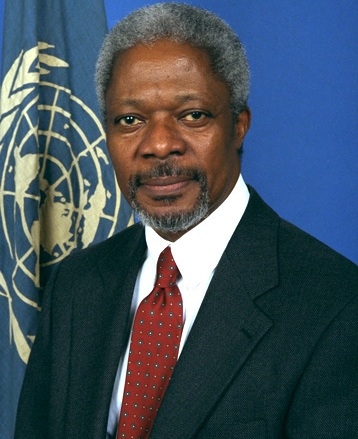
- Contribution: As former Secretary-General of the United Nations, Annan was a vocal advocate for agricultural development in Africa. He served as the Chairman of the Alliance for a Green Revolution in Africa (AGRA), promoting agricultural reforms and innovation.
- Impact: His leadership at AGRA was key in driving efforts to improve seed quality, agricultural productivity, and farmer support systems across the continent.
- Famous Quote: "The future of Africa’s development depends on transforming its agriculture."
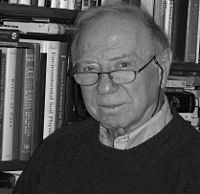
- Contribution: Although born in Israel, Hillel's groundbreaking work in micro-irrigation techniques has had a lasting impact on African agriculture. His irrigation innovations helped regions facing water scarcity optimize water use for agricultural productivity.
- Impact: His techniques have been adopted in arid and semi-arid regions of Africa, contributing to food security in water-scarce environments.
- Famous Quote: "Water and land are the essential ingredients for the survival and prosperity of humanity."

- Contribution: Jones is an agricultural scientist known for developing the New Rice for Africa (NERICA) hybrid, which significantly boosts rice yields and is resistant to drought and disease.
- Impact: His work on rice breeding has improved rice production across Africa, enhancing food security and reducing dependence on imported rice.
- Famous Quote: "Agricultural transformation in Africa is possible with the right technology and the involvement of our farmers."
- Contribution: A renowned nutritionist and agricultural scientist, Oniang'o has worked tirelessly to improve food and nutrition security in Africa. She has been an advocate for women farmers and sustainable agricultural practices.
- Impact: Her research and advocacy have helped improve nutrition policies and practices, leading to healthier communities and more productive agricultural systems in Kenya and across Africa.
- Famous Quote: "The true wealth of a nation lies in the health of its people, which starts with the food they eat."
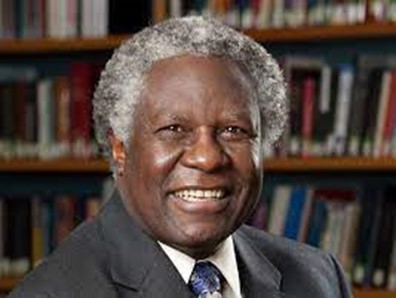
- Contribution: A prominent scientist and academic, Juma was a leading advocate for the use of science and technology to boost agricultural productivity in Africa. He promoted the use of biotechnology and agricultural innovations to tackle food insecurity.
- Impact: His work on agricultural policy and technological innovation has shaped global and African agricultural strategies, helping to advance the continent’s agricultural development.
- Famous Quote: "Innovation is the engine for growth in Africa’s agriculture."
- Contribution: Though Filipino by nationality, Dar’s work in Africa as Director General of the International Crops Research Institute for the Semi-Arid Tropics (ICRISAT) has had a profound impact on African agriculture. He promoted agricultural research for dryland farming and crop improvement.
- Impact: His research on drought-resistant crops has improved agricultural productivity in semi-arid regions of Africa, helping millions of farmers adapt to climate change.
- Famous Quote: "Research is the key to unlocking the potential of African agriculture."
- Contribution: A former Rwandan Minister of Agriculture and President of AGRA, Kalibata has been a leading figure in advancing agricultural transformation across Africa, focusing on smallholder farmer support and sustainable farming practices.
- Impact: Under her leadership, AGRA has helped millions of African farmers increase their productivity and income through access to better seeds, technologies, and market systems.
- Famous Quote: "Agriculture is at the heart of Africa’s future, and we must invest in it for our people to thrive."
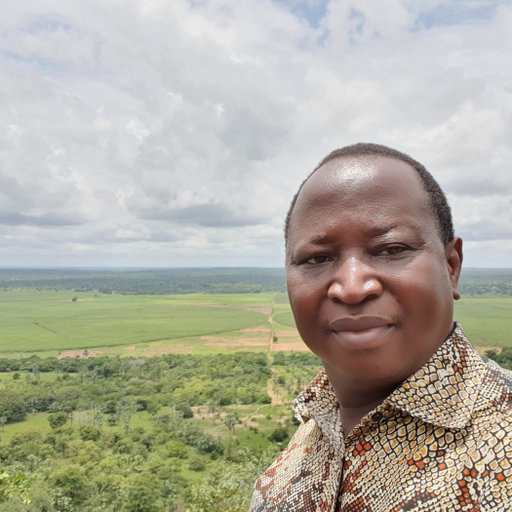
- Contribution: An agricultural scientist and soil expert, Bationo has worked extensively on improving soil fertility and sustainable farming practices in the Sahel region of Africa. His research focuses on soil health and nutrient management.
- Impact: His innovations in soil management have helped restore degraded soils and boost agricultural productivity in some of the most challenging environments in Africa.
- Famous Quote: "Healthy soils are the foundation of a thriving agricultural system."

Joseph DeVries (Present) – Kenya: Founder of the African Seed Access Index, DeVries has worked on improving access to high-quality seeds for smallholder farmers across Africa.
- Famous Quote: "Seeds are the foundation of agriculture, and access to quality seeds is the first step toward food security."
Kendi Mutungi (Present) – Kenya: An agricultural scientist focusing on post-harvest losses and food preservation, Mutungi advocates for improving storage and processing technologies to reduce food waste in Africa.
- Famous Quote: "Reducing post-harvest losses is crucial to ending hunger in Africa."
These African agricultural engineers and scientists have made remarkable contributions to their countries and the continent as a whole, ensuring better food security, productivity, and resilience. Their work in biotechnology, soil management, water conservation, and agricultural policy has provided lasting solutions to the food challenges Africa faces, bringing hope and prosperity to millions of people.
Note this list I did text without any particular order and best of my memory text me if you don't agree any of i mentioned or someone i Missed.
notable Indian agricultural engineers, scientists, and innovators whose contributions have been instrumental in shaping India’s agricultural sector, improving food security, and combating hunger. Their work has helped transform Indian agriculture into a more sustainable, productive, and resilient system.
Key Indian Agricultural Engineers and Innovators1.1. M. S. Swaminathan (1925–2023)
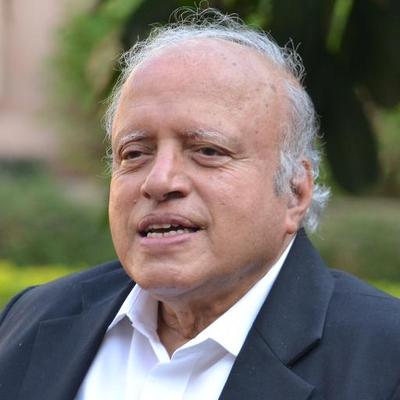
- Contribution: Father of India’s Green Revolution, Swaminathan introduced high-yielding wheat and rice varieties that helped India achieve self-sufficiency in food production during the 1960s and 70s.
- Impact: His efforts in agricultural research and policy saved millions from famine and significantly improved India’s food security.
- Famous Quote: "If agriculture goes wrong, nothing else will have a chance to go right."
- Contribution: Known as the "Father of the White Revolution" in India, Kurien was the architect of Operation Flood, the world’s largest dairy development program.
- Impact: His efforts made India the largest producer of milk in the world, improving rural incomes and nutritional standards.
- Famous Quote: "True development is not the development of land, or of cows; it is the development of men and women."
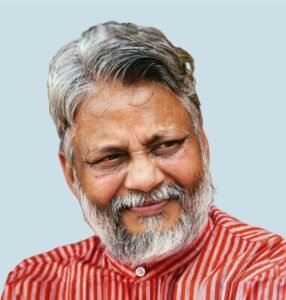
- Contribution: Known as the "Waterman of India," Singh pioneered water conservation techniques like rainwater harvesting and rejuvenation of rivers in drought-prone areas of Rajasthan.
- Impact: His work has improved water availability for agriculture, transforming barren lands into fertile fields and increasing food security in arid regions.
- Famous Quote: "The key to food security is water security."

- Contribution: A notable agricultural engineer and former director of the Central Institute of Agricultural Engineering, Carr worked on designing agricultural machinery for Indian farmers.
- Impact: His innovations in farm equipment mechanized agriculture, improving productivity and efficiency, particularly for small and marginal farmers.
- Famous Quote: "Farm mechanization is the cornerstone of modern agricultural productivity."
- Contribution: Renowned for his work on farm machinery, Dr. Mehta is a leading agricultural engineer at the Central Institute of Agricultural Engineering, focusing on mechanization for small and marginal farmers.
- Impact: His contributions to agricultural mechanization, including tools and equipment for land preparation and planting, have helped increase efficiency and reduce manual labor.
- Famous Quote: "Mechanization is the key to sustainable agricultural growth."

- Contribution: As the former chairperson of the National Dairy Development Board (NDDB), Patel played a crucial role in continuing India’s dairy revolution and improving rural livelihoods through dairy farming.
- Impact: Her leadership in the cooperative dairy sector has empowered millions of rural farmers, particularly women, in improving their income and nutrition.
- Famous Quote: "Empowering farmers through cooperatives is the path to rural prosperity."
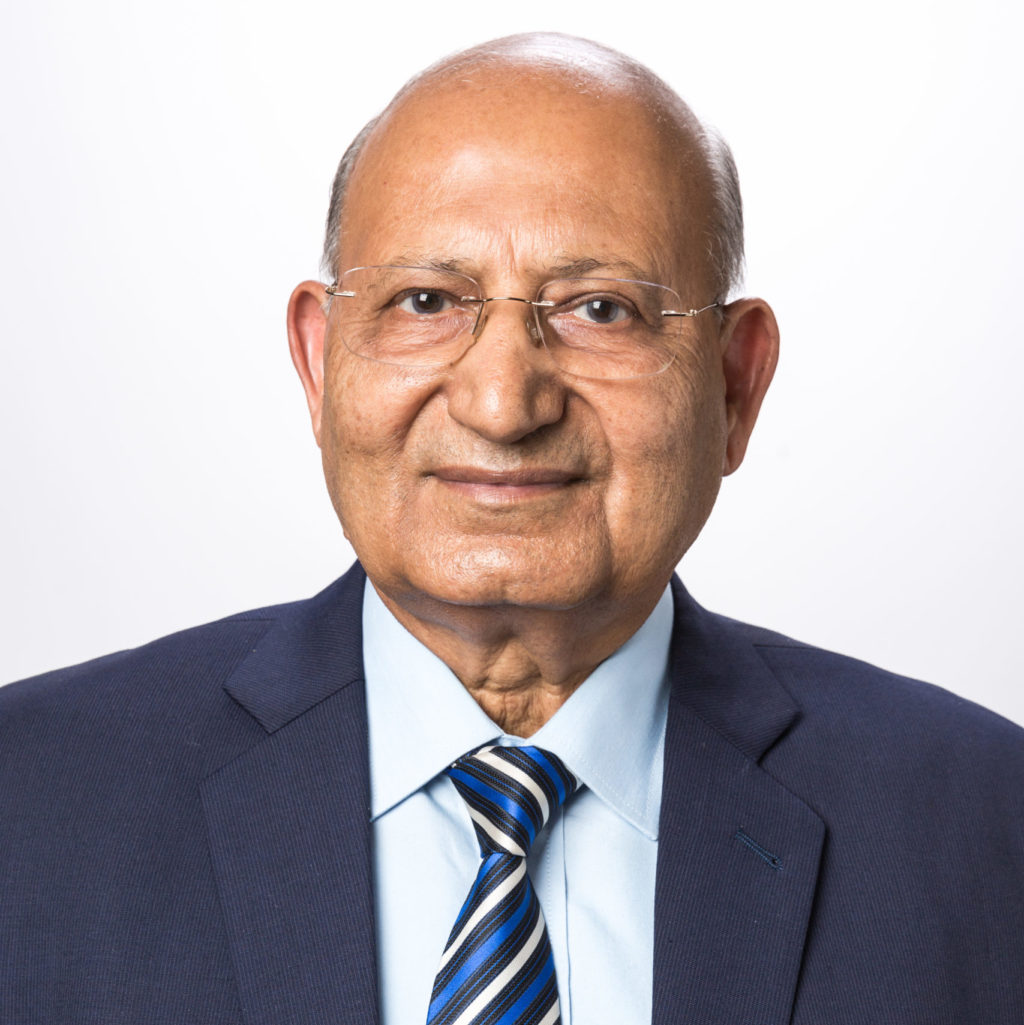
- Contribution: Founder of the Asia-Pacific Association of Agricultural Research Institutions (APAARI) and former Director General of the Indian Council of Agricultural Research (ICAR), Paroda promoted agricultural research and innovation.
- Impact: He led major initiatives in crop improvement and sustainable agriculture in India and across Asia, improving food security through research-driven strategies.
- Famous Quote: "Innovation in agriculture is key to overcoming the challenges of food security and environmental sustainability."
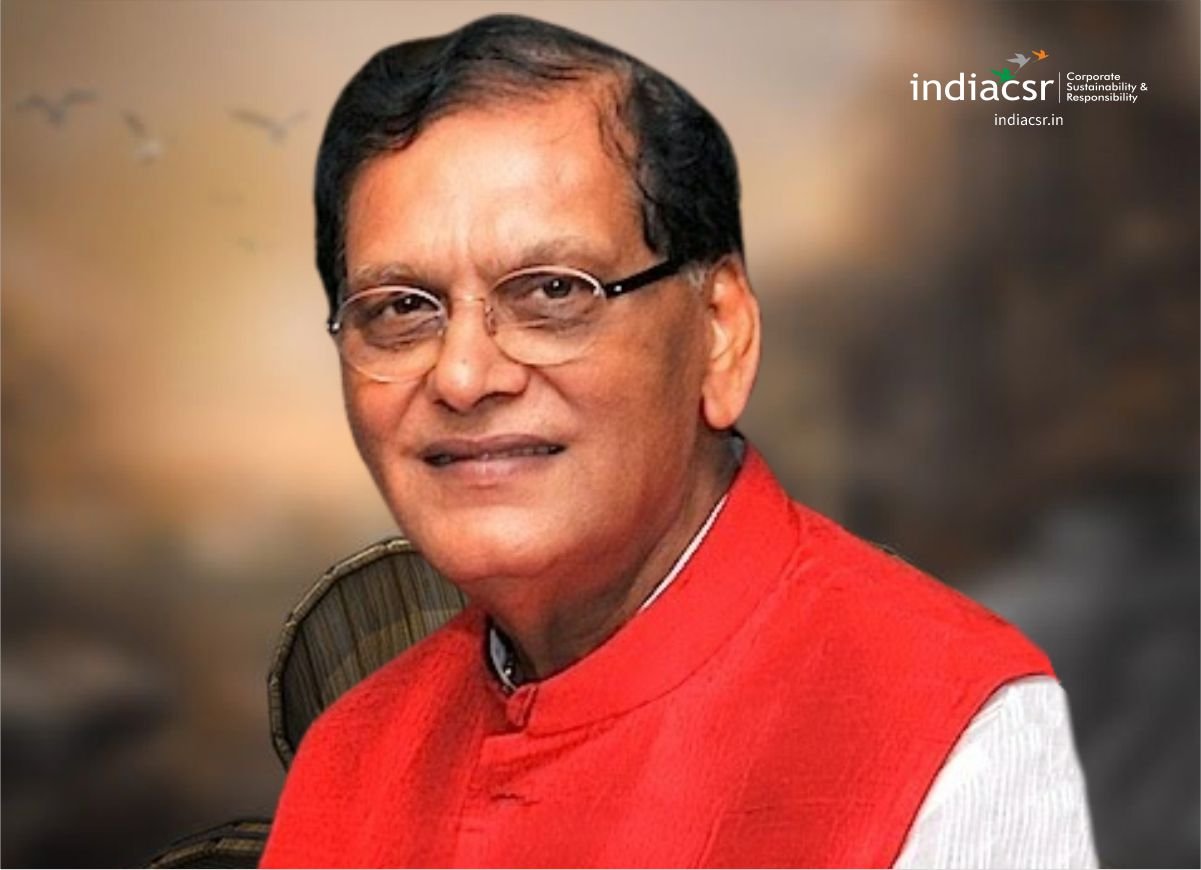
- Contribution: Known for his work in promoting precision agriculture and the use of modern farming technologies, Pathak is an agricultural scientist who advocated for the use of drones, GPS, and data analytics in farming.
- Impact: His efforts in advancing precision agriculture have helped optimize resource use, reduce costs, and increase productivity in India’s farms.
- Famous Quote: "Precision farming holds the key to optimizing agricultural inputs and maximizing yields."

- Contribution: A leading agricultural engineer and academic, Rathore has worked extensively on post-harvest technologies, particularly for improving food processing and reducing waste.
- Impact: His contributions to post-harvest management and processing have helped reduce food losses, improve food quality, and enhance the value chain for farmers.
- Famous Quote: "Reducing post-harvest losses is as important as increasing production in our fight against hunger."

- Contribution: A leading Indian agricultural scientist and former director of the Plant Production and Protection Division at the Food and Agriculture Organization (FAO) of the UN, Pandey contributed to global food security.
- Impact: His work has led to improvements in the resilience of crops to climate change and better farming practices globally, including in India.
- Famous Quote: "The future of agriculture lies in adapting to climate change and ensuring sustainability in food production."
- Ajay Vir Jakhar (Present): Chairman of Bharat Krishak Samaj (Farmers' Forum India), Jakhar is an advocate for sustainable farming and farmer welfare.
- Famous Quote: "Indian agriculture must shift from input-intensive to knowledge-intensive farming."
- Devinder Sharma (Present): A prominent food and trade policy analyst, Sharma advocates for farmer rights and sustainable agricultural policies.
- Famous Quote: "Agriculture must remain the primary driver of rural livelihoods."
These Indian agricultural engineers and scientists have significantly shaped the country’s agricultural landscape, addressing key challenges such as food security, water scarcity, mechanization, and climate change. Their work has not only enhanced productivity and sustainability but also helped millions of farmers improve their livelihoods, ultimately contributing to India's goal of eradicating hunger.
Note this list I did text without any particular order and best of my memory text me if you don't agree any of i mentioned or someone i Missed.
modern-era agricultural engineers, including their famous quotes and the addition of M. S. Swaminathan, one of the most significant contributors to agricultural development:
1. M. S. Swaminathan (1925–2023)
- Contribution: Known as the father of the Green Revolution in India, Swaminathan worked on introducing high-yielding varieties of wheat and rice, helping India achieve self-sufficiency in food production.
- Impact: His work prevented famines in India and contributed significantly to global food security.
- Famous Quote: "If agriculture goes wrong, nothing else will have a chance to go right."

- Contribution: Founder of International Development Enterprises (iDE), Polak developed affordable farming technologies like low-cost drip irrigation systems for smallholder farmers in developing countries.
- Impact: His innovations have helped millions of small-scale farmers in poverty-stricken regions increase their yields and income, combating hunger and improving livelihoods.
- Famous Quote: "The only way to end poverty is to create jobs and incomes for those who live on less than a dollar a day."

- Contribution: Founder of East-West Seed, Groot developed high-quality vegetable seeds suited to the tropical climates of Southeast Asia and other developing regions.
- Impact: His work has dramatically increased food security and smallholder farmer incomes by providing access to better seeds, leading to higher yields of nutritious vegetables.
- Famous Quote: "Seeds are the starting point of agriculture. They determine the quality of life for millions of small farmers around the world."

- Contribution: An agricultural economist and engineer, Adesina has been a leading figure in launching initiatives like the Alliance for a Green Revolution in Africa (AGRA).
- Impact: His work in fertilizer use, modern farming techniques, and agricultural policy has significantly increased food security across Africa.
- Famous Quote: "The future of Africa’s development depends on agriculture, and agriculture depends on youth."

- Contribution: A plant pathologist and geneticist, Ronald focuses on genetically engineering rice to be resistant to flooding and other climate challenges.
- Impact: Her work has improved crop resilience to climate change, particularly in flood-prone regions of Asia, helping to stabilize food production.
- Famous Quote: "To help feed a growing population, we need to embrace a broad array of agricultural technologies, including organic farming and genetic engineering."
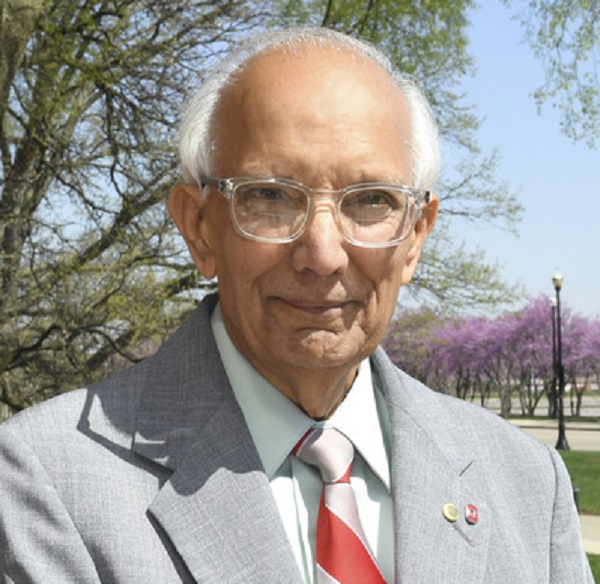
- Contribution: A soil scientist and agricultural engineer, Lal has been instrumental in promoting techniques that improve soil health and carbon sequestration.
- Impact: His work is vital in combating soil degradation and enhancing agricultural productivity, while also helping mitigate climate change.
- Famous Quote: "Soil is the cornerstone of food security. We need to take care of it as we would take care of ourselves."
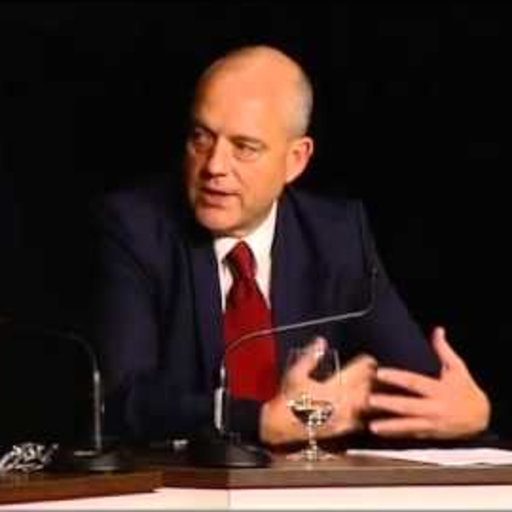
- Contribution: An agricultural economist and researcher, Brookes analyzes the economic and environmental benefits of genetically modified (GM) crops.
- Impact: His work has shown how GM crops contribute to increased food production and sustainability, helping to address global hunger.
- Famous Quote: "GM technology is not a magic bullet, but it can play an important part in the solution to global food security."
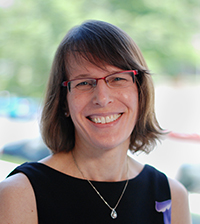
- Contribution: Nutritionist and agricultural engineer with extensive experience in leading food security programs in Africa, Asia, and Latin America.
- Impact: Woldt focuses on integrating nutrition-sensitive agriculture into programs to reduce hunger and malnutrition, improving food security globally.
- Famous Quote: "Sustainable agriculture is key to improving nutrition and ensuring food security for all."
- Contribution: A climate scientist and agricultural engineer, Lobell studies the effects of climate change on food production and develops strategies to improve crop yields.
- Impact: His work has influenced agricultural policies and practices to address food security in a changing climate.
- Famous Quote: "The future of food security depends on how we adapt to the changing climate."
- Contribution: An agricultural scientist and plant breeder, Ejeta developed drought-resistant and pest-resistant sorghum varieties.
- Impact: His innovations have improved food security in Africa, especially in regions where sorghum is a staple food.
- Famous Quote: "Science is a powerful tool to defeat hunger and poverty, but it requires dedication and global cooperation."
- Contribution: Founder of HarvestPlus, Bouis pioneered biofortification, improving the nutritional value of staple crops like rice, wheat, and maize by breeding them to contain higher levels of essential vitamins and minerals.
- Impact: His work has combated micronutrient deficiencies, improving health and food security in developing countries.
- Famous Quote: "Biofortification is about empowering the poor with access to better nutrition through the crops they grow and eat."
These modern engineers, along with historical figures, have made significant contributions to agriculture, helping to avert global hunger. Their work, from soil health to crop genetics and sustainable farming practices, continues to have a profound impact on ensuring food security for a growing population. Their words reflect their dedication to solving one of the world's most pressing challenges.
Note: This list is based on recent News Materials and not in particular order if you think someone is not deserved on the list or someone i missed please write down in comment.
